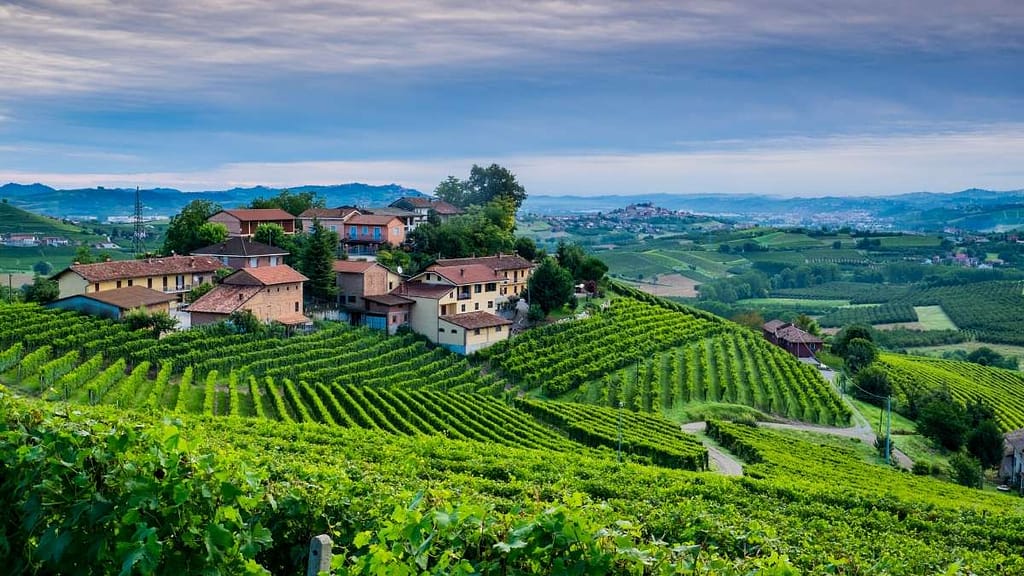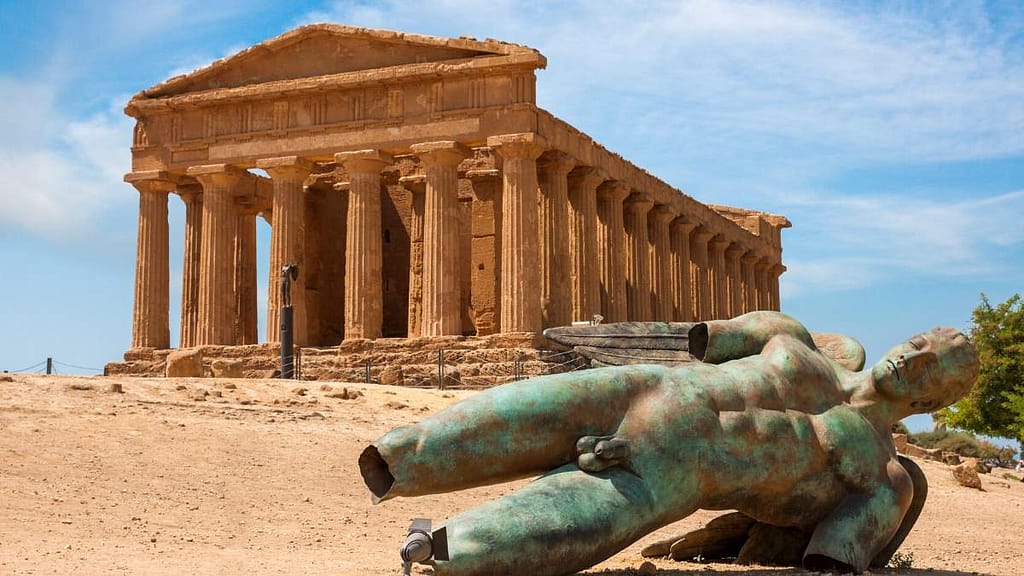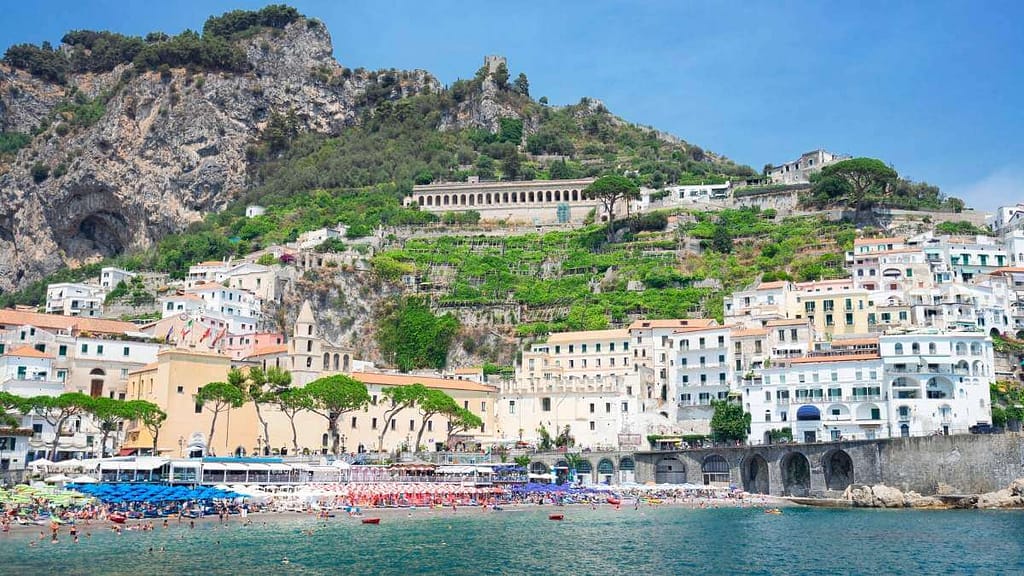William Shakespeare, proclaimed by many as the greatest writer that ever lived, wrote around 37 plays during his life. Out of all those works, ten plays take place in Italy, and two are partially set here. So, if you’ve ever wondered why there are so many of Shakespeare’s plays based in Italy, this post is for you.
Like many other writers in the past, Shakespeare set many of his works outside his native country and often in the past. There was a good reason for that. Fiction was often disguised as a commentary on the politics of the day. Setting the story in a foreign land or distant time was an excellent way to conceal your own monarch/leaders as the characters in the play without directly offending them. It’s also likely that if Shakespeare’s political plays were set in England, they would have been censored.
This post may contain compensated links. Find out more info in our DISCLAIMER.
Why are so many of Shakespeare’s plays set in Italy?
It’s well-known that Shakespeare’s plays didn’t come from his imagination, and he often found his inspiration in other sources. He took existing stories, changed or modified themes, and added characters to suit the narrative. He then left the locations based on where the stories came from, like Hamlet, based on a prince in Denmark.
Shakespeare’s plays in Italy couldn’t be set anywhere else but in Italy. It’s important to note that Italy wasn’t a country during his time. There were various kingdoms, duchies and republics often in conflict over power, politics, and religion. To his English contemporaries, Italy was exotic and foreign.

Many of Shakespeare’s countrymen perceived the peninsula as a place of violence and extreme passion. A land where anything can happen, thus a perfect setting for a tragedy, comedy, or a love story. He played on these existing prejudices, knowing that his audiences would be eager to feed on the drama and emotions of the story.
Shakespeare in Italy: famous play locations
Italy has been a popular backdrop for many fictional and historical novels for writers of all backgrounds. Let’s look at the locations of Shakespeare’s plays set in Italy.
Florence
All’s Well That Ends Well takes place in Florence (also Paris and Marseilles). It’s a complicated tale of love and war. Helena is in love with Bertram, who doesn’t return her affection. To get away from her, he goes off to Florence, searching for war and glory. She naturally goes after him and, in a very Shakespearian ending, he ends up marrying her, and they live happily ever after.

Florence is a beautiful city, famous for its art. It would have been known to Shakespeare’s audience as it was home to the powerful Medici family, who were the bankers to many European rulers. Tuscany’s romantic appeal comes across in many books set in Italy even today.
Padua
One of Shakespeare’s most famous plays, The Taming of The Shrew, is set in Padua. It’s a story of the beautiful younger sister Bianca who can’t marry until her older sister Katherine gets married first. The catch? Katherine isn’t exactly amenable to the idea, and no man wants to marry her. This trope has been adapted into many movie versions, including the famous 10 Things I Hate About You with the late Heath Ledger.

In Shakespeare’s time, Padua was known as Europe’s centre of learning and home to the University of Padua, one of the first in the world. A great way to experience the city is by strolling through the university campus. There is even a wooden anatomical amphitheatre from the 16th century where they used to dissect bodies for medical students. Not quite as romantic, but authentic.
Rome
Shakespeare took inspiration for his plays from Ancient Rome, basing three of his tragedies – Julius Caesar, Titus Andronicus and Coriolanus – in Rome. He also based part of Antony and Cleopatra here. They are tales of political downfall, murder and betrayal that focus on the fickle nature of nations and their leaders.

Shakespeare had often been accused of playing fast and loose with his depictions of Ancient Rome. There is evidence that his plays were often lacking in authenticity, from the costumes worn by actors to the weapons they used. Does that change the message of the plays? Unlikely. You’ll likely mutter “Friends, Romans, countrymen, lend me your ears” as you stroll through the Roman Forum even though it came from Shakespeare’s imagination rather than historical documents.
Sicily
Two of Shakespeare’s plays set in Italy are based in Sicily. The comedy Much Ado About Nothing is set in Messina, while The Winter’s Tale is set on the island of Sicilia. It would have been a location as foreign as the moon to his audiences. In those days, travel was limited mainly to merchants and the military. It’s easy to see how intriguing Sicily would have been to Elizabethan audiences.

Steeped in history and influenced by many cultures over the centuries, Sicily is a fascinating place to explore. Whether you come here for Shakespeare or not, you’ll find a place that’s less touristy and just as worthy of exploration as the rest of the country.
Venice
Shakespeare sets two of his plays in Venice – Othello and The Merchant of Venice. One is a tale of jealousy, false accusations, and revenge, while the other is about romantic ambitions and how far people will go to fulfill them. Both plays factor in racism and prejudices that existed during Shakespeare’s time and are still relatable today.
Venice was a city full of merchants, moneylenders, and soldiers during his time. A place that was perfectly suited for both plays. Today, Venice is a tourism hub that hasn’t changed much through time. As you stroll through the narrow streets and navigate the canals, it’s easy to imagine the stories of the past coming to life.
Verona (also Milan and Mantua)
Romeo and Juliet is probably the most famous of Shakespeare’s plays set in Italy. A tragic love story of two star-crossed lovers from feuding families. The play Two Gentlemen of Verona features themes of friendship, mistaken identities and the lengths people will go to in the name of love.
To this day, Verona is seen as a romantic city where tourists flock to Juliet’s House (Casa di Giulietta). If you dream of standing on her balcony while reciting “O Romeo, Romeo, wherefore art thou Romeo?” this is the place to do it. Verona is a beautiful city, and we recommend visiting the nearby Mantua (Mantova) and Milan to complete your Shakespeare experience.
Final thoughts on Shakespeare in Italy
There is a lot of debate among scholars about whether Shakespeare wrote all the plays himself or if he was merely a ghostwriter for someone else. The documentation of his life is limited and vague at best. His humble origins and little education have made many skeptics question the intimate knowledge of complex legal and political issues featured in his plays. Not to mention the knowledge of foreign lands that served as settings for his plays.
It’s unknown whether Shakespeare ever visited Italy or any other places in his plays. The existing records show him living in Stratford-upon-Avon, the generally accepted place of his birth, and London. Many have argued that his knowledge of Italy and other places came from meeting foreign traders and friendships with well-travelled Englishmen, not from first-hand experience.
Whether you believe in Shakespeare’s talent and authenticity or not, there is no arguing that his many plays have stood the test of time. With about a third of Shakespeare’s plays set in Italy, there is no denying that it was a great source of inspiration, much to the delight of his audiences. Now you can plan your next Italian trip with Shakespearean inspiration. Let us know which places you enjoyed the most.




